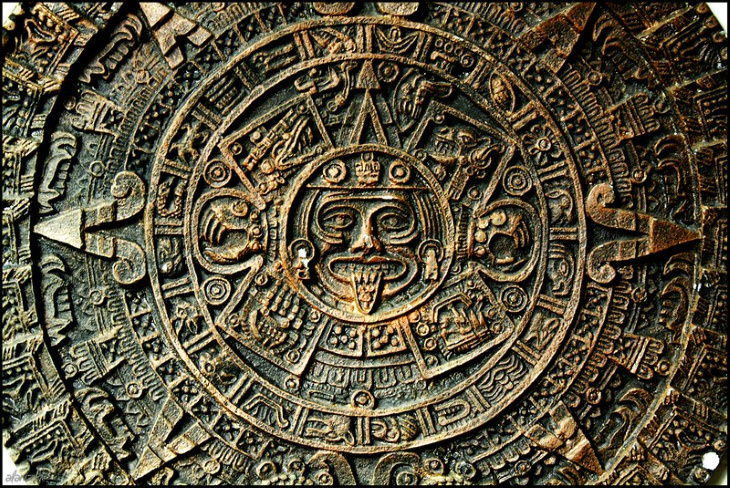1. Oxford University is older than the Aztec civilization
It can be really tricky to compare timelines across different parts of the world, and this fact is a great example of that. It's true, teaching at Oxford University started in the distant year of 1096, whereas the Aztec Empire only started in the 13th century with the founding of the city-state of Tenochtitlán in 1325.
What's more, Oxford isn't the oldest known university in the world either, with the title belonging to the Nalanda University in northern India, which assembled scholars throughout Asia and was started as early as the 5th century. Unfortunately, the university was destroyed by invaders in 1193.
2. Pineapples were once so pricey people rented them
Not a fan of pineapple on your pizza? Well, after reading this story, you might just change your mind. The thing is that in the 1700s and before, pineapples were incredibly rare because of the very specific climatic conditions they require to grow. Columbus was the first to introduce the tropical fruit to Europe when he brought pineapples back from his voyage to the Caribbean.
For centuries, the fruit was imported from the Caribbean islands, which made it a real luxury available only to the wealthiest. According to Mentalfloss, "Monarchs such as Louis XV, Catherine the Great, and Charles II (who even commissioned a painting of his gardener presenting him with a pineapple) enjoyed eating the sweet fruit, and pineapples came to symbolize luxury and opulence". The estimated value of just one fruit was $8000 in today’s money, so some people resorted to renting pineapples to exhibit their wealth.
3. Forks were once considered sacrilegious
As we've mentioned in a previous article titled 12 Popular Inventions That Are Actually From Ancient China, the fork is a Chinese invention that wasn't used in Europe until Catherine de' Medici popularized the utensil in the 16th century. Before the French queen made forks fashionable, though, they were considered sacrilegious for at least 500 years, since the pitchfork was the sign of the devil and no Christian would agree to keep the utensil at home let alone use it in food.
4. There was a war on cats in 13th century Europe
The black cat is still associated with witchcraft and considered to be a bad omen by some people to this day, but few people actually know that this tradition goes back to the 13th century, when Pope Gregory IX proclaimed that cats were the helpers of the devil that spread disease through cities.
As a result, countless cats were exterminated throughout Europe. The absence of cats, in turn, led to a mass rise in the rat population in cities, which, as we know today, were carriers of the bubonic plague, one of the deadliest epidemics in history that, ironically, started just a few decades after this mass cat purge.
5. The time period between the existence of Tyrannosaurus rex and Stegosaurus is larger than the time between T. rex and humans
Dinosaurs ruled the Earth for quite some time, and few things can help us realize just how massive the actual time frame is then this creepy fact. Stegosaurus, a dinosaur that roamed the Earth during the Jurassic period about 150 million years ago and is famous for the series of triangular plates on the top of its back, was actually extinct for 80 million years when the famous T. Rex appeared 67 million years ago during the Cretaceous period. Thus, approximately 67 million years separate us from this creepy predator, which is 13 million years less than the time between the existence of the Tyrannosaurus and the Stegosaurus.
6. Ancient Greek and Roman architecture and statues weren't white
During the excavations of the city of Pompeii, historians found out that Ancient Greek and Roman statues, building, and even just walls in residential buildings were, in fact, painted in various colors. By the time Europeans were once again fascinated by Ancient Roman and Greek art and architecture during the Renaissance and started using it as inspiration, the paint faded away, and Renaissance artists started recreating statues in pure white marble, unknowingly perpetuating this long-standing myth.
7. Tomatoes were once believed to be poisonous
Like potatoes, tomatoes were first brought to Europe from the Americas, and both veggies were met with opposition for nearly 200 years before finally becoming the staple foods they are now. When it comes to tomatoes, in particular, people would often die of lead poisoning after eating highly-acidic tomato dishes from lead plates.
Reacting with the acids naturally present in tomatoes, the lead would leech out of the kitchenware and caused toxic reactions and death, but our ancestors knew nothing about the dangers of lead at the time. In 1820, there was a whole trial in Salem, New Jersey, held to dispel the belief that tomatoes were deadly, during which Gibbon Johnson, one of the residents, ate a whole basket of tomatoes in public.
8. Alarm clocks made a whole profession obsolete
We never suspected that technology has been making jobs obsolete for this long! It turns out that before alarm clocks became available to most people, there were professionals called knocker-uppers whose job was to knock on people’s windows to help them wake up at the right time. These people used a variety of tools, such as sticks, pea shooters, or rattles to wake people more gently and reach each window.
9. A horse as consul
The Roman Emperor Caligula is widely known as a mad tyrant, but a lack of love for animals is a trait you can't ascribe to the Roman head of state. Caligula was reportedly especially caring and protective of one of his horses, whom he called Incitatus. The emperor loved the horse so much that he had an ivory manger built for him to sleep in, a collar with precious stones, as well as an entire palace complete with servants. The cherry on top of the story is that the Roman Emperor even tried to make Incitatus a consul, though unsuccessfully.
10. The Charlie Chaplin contest
According to gossip columns from the 1920s, Charlie Chaplin once entered a Charlie Chaplin lookalike competition, and after performing his famous walk, the famous silent cinema actor reportedly came in 27th place. Though no records of this event appear in the actor's official autobiography, it may have very much been true, as the press was spreading this story all around the world at the time, you can even say it went viral!
Don't forget to share this fun article with family and friends!










